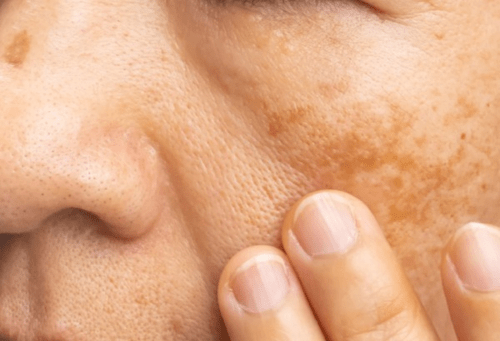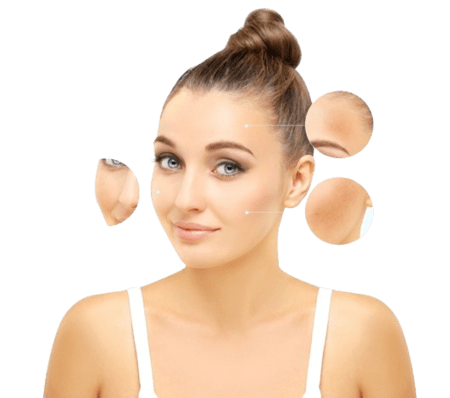

A healthy glowing skin reflects physical and emotional elegance. Hyperpigmentation is a condition of the skin which results in patches of dark areas and uneven tone of the skin. These dark spots and blemishes are often cause of concern as they negatively affect the confidence and self-esteem of individuals facing this issue.

Hyperpigmentation occurs when melanin is overproduced in some areas of the skin. Melanin, an essential pigment in skin hyperpigmentation, is created by the process known as melanogenesis. Tyrsosinase is a major enzyme in melanin formation, and overactivity of the enzyme produces hyperpigmentation.
Melasma
Melasma, which causes brown or grey pigmentation on the face. Melasma is thought to be induced by hormonal changes. Melasma can occur in both sexes, however it is more frequent in women, especially during pregnancy. Hyperpigmentation can arise anywhere on the body however it is most typically seen on the stomach and face.Post-inflammatory hyperpigmentation
Post-inflammatory hyperpigmentation is caused by hypermelanosis following skin damage or inflammation. This condition is not sex or age biased. It is caused by an injury or inflammation of the skin. Acne is a common cause of this condition.Age or liver spot:
Age or liver spot: Also known as sun spots or solar lentigines, they are linked to excessive sun exposure over time. In general, they appear as spots on sun-exposed regions, such as the hands and face.Treatment options for hyperpigmentation includes photoprotection, topical and systemic medicines, chemical peels, and laser/light-based treatments. Topical therapies for skin whitening include use of hydroquinone (HQ), retinoids, salicylic acid and glycolic acid. Retinoids in topical preparations carry the risk of developing retinoid dermatitis. Adverse effects associated with topical therapies containing glycolic and salicylic acids include transitory irritation, burning and desquamation, dryness, itching, and erythema. Chemical peels can have a range of side effects, from moderate temporary signs like burning and skin irritation to more significant negative consequences including scarring, infections, and undesirable pigmentary changes.
Aurance anti-hyperpigmentation cream is powered with natural actives that are well tolerated and gentle on the skin. The plant extracts employed act on different stages of excess melanin formation without causing damage to the skin.

Ingredients